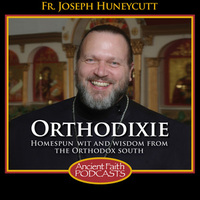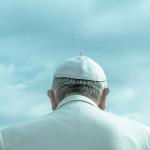by Aidan Nichols OP
Part 2
I turn now to the actual genesis of the schism from a Catholic standpoint, along with some account – necessarily summary and unadorned – of the four historic ‘dividing issues’: those disputed questions which historians can show to have most worried many Easterners when looking at developments in the Latin church, and which constituted the agenda of the reunion Councils, Lyons II in 1274 and Florence in 1439.
This is of course an enormous subject which would require an account of most of Church history in the first millennium to do it justice. Here I can only give a brief indication and refer those interested in more historical detail – and certainly there is no shortage of fascinating material available …
A Study in Schism.
The development of the schism between Greek East and Latin West was owed essentially to three factors. The first of these is the increasing cultural distance, and so alienation, suspicion and eventually hostility, which counterposed, one against the other, the Byzantine and Latin halves of the Mediterranean basin, as also tracts of Europe further afield – especially Russia on the one hand, the Germanic world on the other, evangelised as these had been from, respectively, Greek and Roman mother-churches. As a common language, a common political framework, a common social structure, and a common theological universe became, in the late patristic and early mediaeval periods, a thing of the past, Eastern and Western Christians ceased to feel themselves parts of one Commonwealth – something given especially brutal expression in the sack of Constantinople by the crusader host in 1204.
The second principal factor in the making of the schism was the rivalry between the Byzantine emperors and the Roman popes considered as officers of the Christian commonwealth responsible for its overall direction and for the adjustment of organisational problems or clashes within it. Constantine the Great not only inherited the imperial ideology of the supreme rulers of the Roman res publica, but also permitted – perhaps encouraged – the transformation of this ideology into a fully fledged imperial theology by such figures as Eusebius of Caesarea.
The Christian emperor, though pretending to no power to determine doctrine, did claim an overall right of supervision for the public, external life of the churches. But this was exactly the position which those in the West who supported the developing theology of the unique ‘Petrine’ ministry of the Roman bishop wished to give the pope. In the first millennium there was no generally agreed ecclesiology of the Roman primacy. There are Latins who took a minimalist view of it, Greeks who took a maximalist. But in general, of course, Westerners came to favour a high theology of the Roman church and bishop, Easterners to regard such a theological doctrine with foreboding as a departure from the ethos of the Pentarchy, the idea of the necessary concord of the five patriarchs Rome, Constantinople, Alexandria, Antioch and Jerusalem – which by the eighth century at least must count as the normal Byzantine picture of what specifically episcopal leadership entailed.
The third and last factor in the turning of tensions into an actual break was the emergence of the four disputed questions which served as lenses concentrating the heat given off in these chronic or structural tensions until it became explosive.
In order of their historic emergence, these questions or topics are: the Filioque, the nature of the Roman primacy, the use of azymes or unleavened bread in the Western Mass, and the doctrine of Purgatory, and especially the symbolisation of the intermediate state as a purifying fire.
On all these points, even that of azymes which might be thought an issue singularly unprofitable or at least peripheral to Christian thought, theological ideas of great interest were brought forward on both sides, though probably only the Filioque and the primacy question would be regarded as ‘dividing’ issues today.
As regards the Filioque – the procession of the Holy Spirit, according to the amended Latin version of the Creed of Nicaea-Constantinople, not only from the Father but from the Son as well, I believe that, could we count on a modicum of good will, we might well be able, without damage to the doctrinal integrity of our two communions, to resolve this technical issue in Trinitarian theology: technical, yet also crucial for how we see the Spirit in relation to the Son, and so their respective economies in their interaction in our lives.
The matter of the Roman primacy is less easily disposed of, and I will return to it at the end of my presentation. So much – very schematically, and inadequately, – on the historic genesis of the schism and its quartet of doctrinal conflagration points. The operation of the three factors – the mutual cultural estrangement, the conflicting expectations for the roles of emperor and pope, and the specifically theological issues, meant that by the 1450’s the Byzantine church, in rejecting the Florentine union of 1439, had definitely broken communion with the Roman see, a situation gradually extended in a rather uneven way to the rest of the Orthodox world in the course of the sixteenth and seventeenth centuries, there being some examples of communicatio in sacris – for instance of the use of Latin clergy, chiefly Jesuits, to preach and hear the confessions of the Greek Orthodox faithful – even as late as the first half of the eighteenth century in some places.
To be continued …











